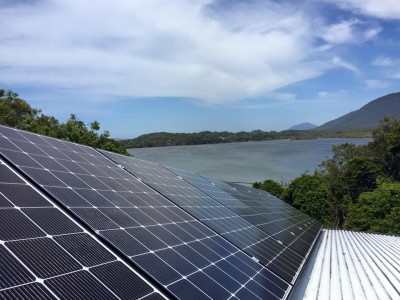
Understanding the normal operating output of your solar system is essential to make sure any faults are detected, and to ensure your system continues to operate at optimum capacity. It is also important to understand the realistic limitations of your system, and how time of the day, time of the year, shading from trees or buildings and changes in weather can affect the kWh your system will produce.
The way your solar system will generate power over the course of a day will depend greatly on the direction (or orientation) your panels have been installed. For solar systems installed around the mid-north coast of NSW:
– Panels facing east will produce more solar power in the mornings through to the middle of the day, with less electricity being produced in the evenings as the sun sets in the west.
– Panels facing west will produce more power from midday and through the afternoon than in the mornings, as much of the morning sunlight from the east won’t fall directly onto the panels.
– Panels facing north will produce most of their power in the middle of the day, with good production through the late morning and early afternoon.
– Panels should not usually be installed facing south as this will result in lower than optimal solar production throughout the day.
As the seasons change, so too should the expected amount of solar generation from your system. During the summer months, the sun is ‘higher’ in the sky, and the days are longer. This means that electricity production from your solar system should be at a maximum during the summer months. Similarly, during the winter when the sun is ‘lower’ in the sky, and the days are shorter, your solar system will be generating less power over the day (than compared to summer generation). You can learn more about seasonal variation via the LG Solar System Output Calculator , just imput your postcode and system size (in kW).
Shading refers to the shadows that fall on your solar panels, obstructing direct sunlight and reducing the amount of solar energy your system can convert into electricity. Shading often becomes a greater issue during winter as the shadows from trees / buildings may be more present and larger due to the lower position of the sun. Worst case winter shading impact should be considered by your system designer at time of installation, however changes in obstructions from vegetation growth or structural developments to nearby buildings can impact shading on your solar panel array. Be aware of any obstructive changes around your home, and monitor your system generation accordingly.
Solar panels love bright, sunny, cool days. Particularly hot days, as well as days of cloud, rain or stormy weather can reduce your solar system production for the duration of bad weather. While the strength of each panel will vary between manufacturers, all solar panels installed in Australia should be strong enough to resist damage from rain, hail and wind in most non-extreme cases. Local environmental weather factors should be considered by your designer at the time of installation, to ensure the appropriate panel and wind loading racking strength is selected for your region. In the unlikely event that your system does not return to producing the expected kWh following a bad weather event, it is best to contact your solar installer for advice. A system assessment may be required to check for weather damage to any electrical components.
If you would like to learn more about caring for your solar system, or if you have any concerns about your system performance, don’t hesitate to contact us here.